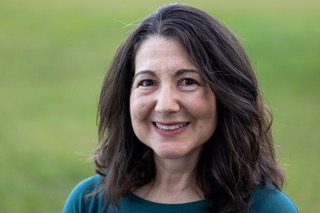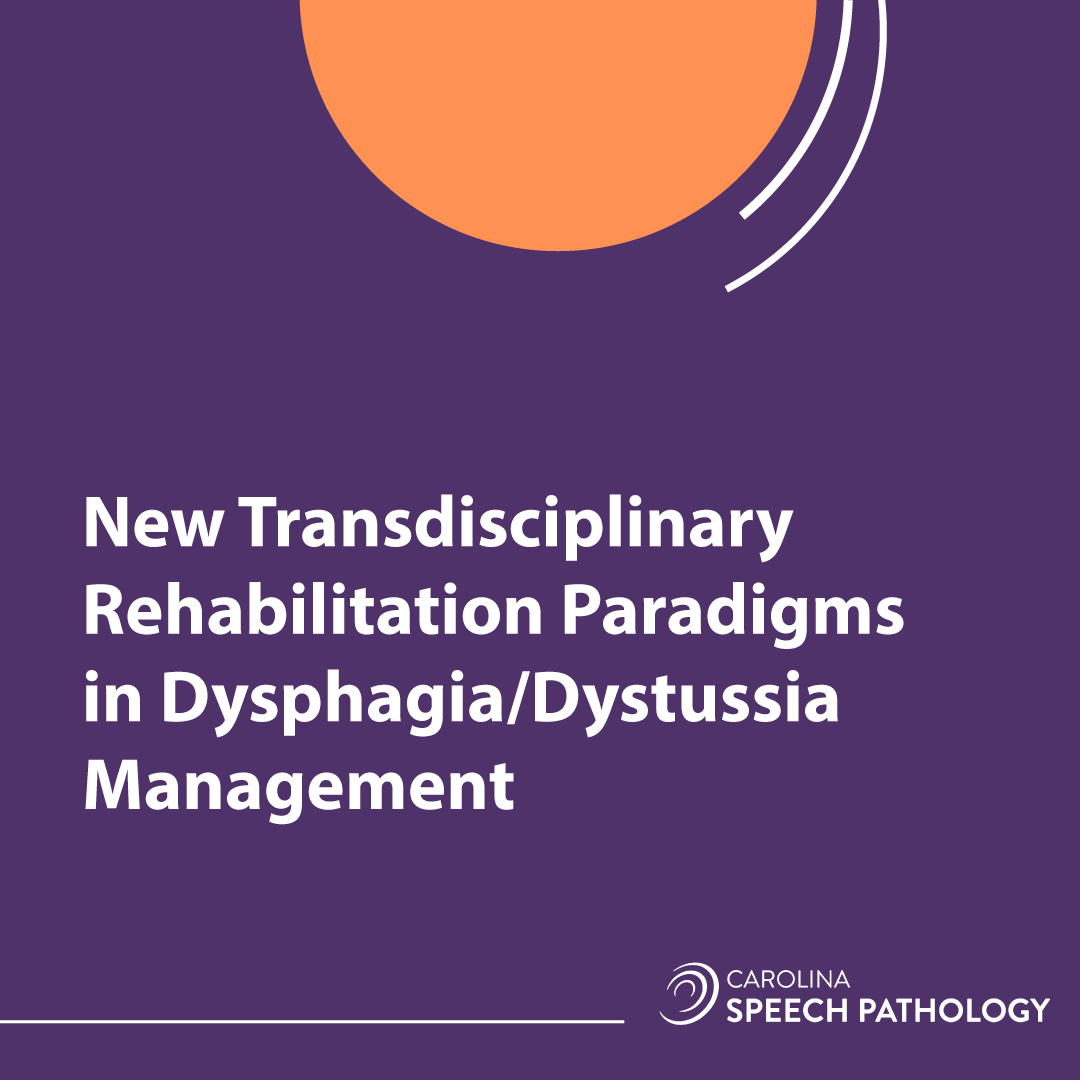My name is Ali, and I am a speech language pathologist who currently works in a 114 bed rehabilitation hospital that opened in 2020. Initially seeking a way to best serve patients with tracheostomy, our facility formed a transdisciplinary Trach Team. Our team includes representatives from dietary, physical therapy, speech language pathology, respiratory, nursing, and our physicians. As a result of preliminary Trach Team meetings, we launched a Trach Team rounds initiative. A major benefit of twice weekly walking rounds is that the patient becomes the center of the care team, which supports opportunities for real-time education and conversation. Various quality improvement initiatives came out of these discussions and conversations at the staff level. The team realized the need for a quick system for communicating status changes, leading to utilization of a laminated sign that is updated during rounds as well as any time progressions or declines occur. We also created an EMR note that allows us to chart the patient’s current status, medical updates, accessories utilized, and family training needs. This note is completed in real-time and is available to all staff. The team developed a new policy to support patient safety within this population: the trach “go bag” that every patient with a trach must have when they leave their room for therapy. The bag includes suction kits as well as replacement trachs in both the current size as well as a smaller size. A spreadsheet was established that is used to document and track progress. Items that are tracked include oral intake progression via IDDSI, trach size/type, speaking valve trials, capping trials and decannulation, as well as respiratory function measurements.
As awareness of our team and its work grew, we were better able to engage other stakeholders, expanding our core team to include ENT consultation when we have difficulty with trach weaning progression and need an endoscopic evaluation. Our ENT uses our Fiberoptic Endoscopic Evaluation of Swallowing (FEES) equipment to quickly visualize the upper airway and establish treatment options.
One of our four rehab units is specialized for rehabilitation of spinal cord injury and complex care. We learned that parameters for decannulation and dysphagia rehabilitation can differ for patients with higher level spinal cord injuries and sought new research as well as physician input on how to best manage these patients and optimize outcomes.
While we had been incorporating respiratory muscle strength training as part of our dysphagia rehabilitation across our units, we began expanding our focus to include dystussia (disordered cough). We utilize peak flow meter devices to obtain baseline measurements of peak flow. Measurements below 270 L/min are associated with difficulty in clearing material from the airway. Recent studies have highlighted the use of specific cough skill training, notably via telehealth for individuals with Parkinson’s disease. We adapted the principles to use with our patients with dysphagia and dystussia.
Through our teamwork, we learned not only of the value of cough skill training, but the importance of improved pulmonary function and the difficulties associated with SCI. Pulmonary complications are a leading cause of death in the first year after spinal cord injury. To support our involvement within the care pathway, we attended inservices with our physicians and developed a therapy competency targeting mechanical cough assist to further improve quality of cough and decrease risk of pneumonia.
While we have concluded that a multidisciplinary trach team enhances patient outcomes, considerations for further investigation include patient and team member reported outcomes. We would like to explore the experience of patients and team members regarding in-person multidisciplinary rounds and interview patients and other stakeholders to quantify the perceptions of multidisciplinary trach team rounds. Recently, we updated our outcome measures to include peak flow for cough and exhalation, as well as maximum expiratory pressure for all individuals with tracheostomy and/or SCI. We are encouraged by our results to date. Of patients medically eligible for decannulation (those with no existing upper airway obstruction/paralysis), 93% who are admitted with a trach leave without one. In addition, of our patients admitted with a diet below “regular” (IDDSI 7/0), 73% progressed to IDDSI 5/0 or higher. In the past year, we have decreased our average days to decannulation from 11.5 to 9.6, with a mode of 7 days from admission.
I encourage anyone working in an environment where you care for individuals with trachs to consider the benefits of organized trach rounds in your approach to patient care.
***
Written by Alina Holmes, MS CCC-SLP CBIS
 Ali Holmes, M.S. CCC-SLP, CBIS, is the SLP Advisor for Sheltering Arms Institute. As a member of the clinical science team, she supports the SLP department in mentoring and student programs, knowledge translation, clinical practice guideline use and program development. Prior to that position, she was Speech Pathology Manager at Encompass Health. She has provided diagnostic and therapeutic services to inpatient, day and outpatient adult populations, as well as managed a team of speech pathologists. In her career, she has developed outpatient voice and swallowing programs, and other specialty programs in stroke rehabilitation, pulmonary rehabilitation, tracheostomy management and Parkinson’s disease. Ali has presented to groups throughout the region and at the statewide and national conferences for Speech Pathology. Ali graduated with BS and MS degrees from James Madison University.
Ali Holmes, M.S. CCC-SLP, CBIS, is the SLP Advisor for Sheltering Arms Institute. As a member of the clinical science team, she supports the SLP department in mentoring and student programs, knowledge translation, clinical practice guideline use and program development. Prior to that position, she was Speech Pathology Manager at Encompass Health. She has provided diagnostic and therapeutic services to inpatient, day and outpatient adult populations, as well as managed a team of speech pathologists. In her career, she has developed outpatient voice and swallowing programs, and other specialty programs in stroke rehabilitation, pulmonary rehabilitation, tracheostomy management and Parkinson’s disease. Ali has presented to groups throughout the region and at the statewide and national conferences for Speech Pathology. Ali graduated with BS and MS degrees from James Madison University.
****
References
Bach JR, Burke L, Chiou M. Noninvasive Respiratory Management of Spinal Cord Injury. Phys Med Rehabil Clin N Am. 2020 Aug;31(3):397-413. doi: 10.1016/j.pmr.2020.03.006. Epub 2020 May 6. PMID: 32624102.
Brenner MJ, Pandian V, Milliren CE, et al. Global Tracheostomy Collaborative: data-driven improvements in patient safety through multidisciplinary teamwork, standardisation, education, and patient partnership. British Journal of Anaesthesia. 2020;125(1):e104-e118. doi:10.1016/j.bja.2020.04.054
Kutsukutsa J, Mashamba-Thompson TP, Saman Y. Tracheostomy decannulation methods and procedures in adults: a systematic scoping review protocol. Syst Rev. 2017;6(1):239. Published 2017 Dec 4. doi:10.1186/s13643-017-0634-0
McRae J, Morgan S, Wallace E, Miles A. Oropharyngeal Dysphagia in Acute Cervical Spinal Cord Injury: A Literature Review. Dysphagia. 2023 Aug;38(4):1025-1038. doi: 10.1007/s00455-022-10535-0. Epub 2022 Nov 14. PMID: 36374337; PMCID: PMC10326135.
Sevitz JS, Borders JC, Dakin AE, Kiefer BR, Alcalay RN, Kuo SH, Troche MS. Rehabilitation of Airway Protection in Individuals With Movement Disorders: A Telehealth Feasibility Study. Am J Speech Lang Pathol. 2022 Nov 16;31(6):2741-2758. doi: 10.1044/2022_AJSLP-22-00063. Epub 2022 Oct 24. PMID: 36279509; PMCID: PMC9911128.
Shikani AH, Elamin EM, Miller AC. The Shikani HME: A New Tracheostomy Heat and Moisture Exchanger. J Speech Lang Hear Res. 2020 Sep 15;63(9):2921-2929. doi: 10.1044/2020_JSLHR-19-00107. Epub 2020 Aug 18. PMID: 32810415.

